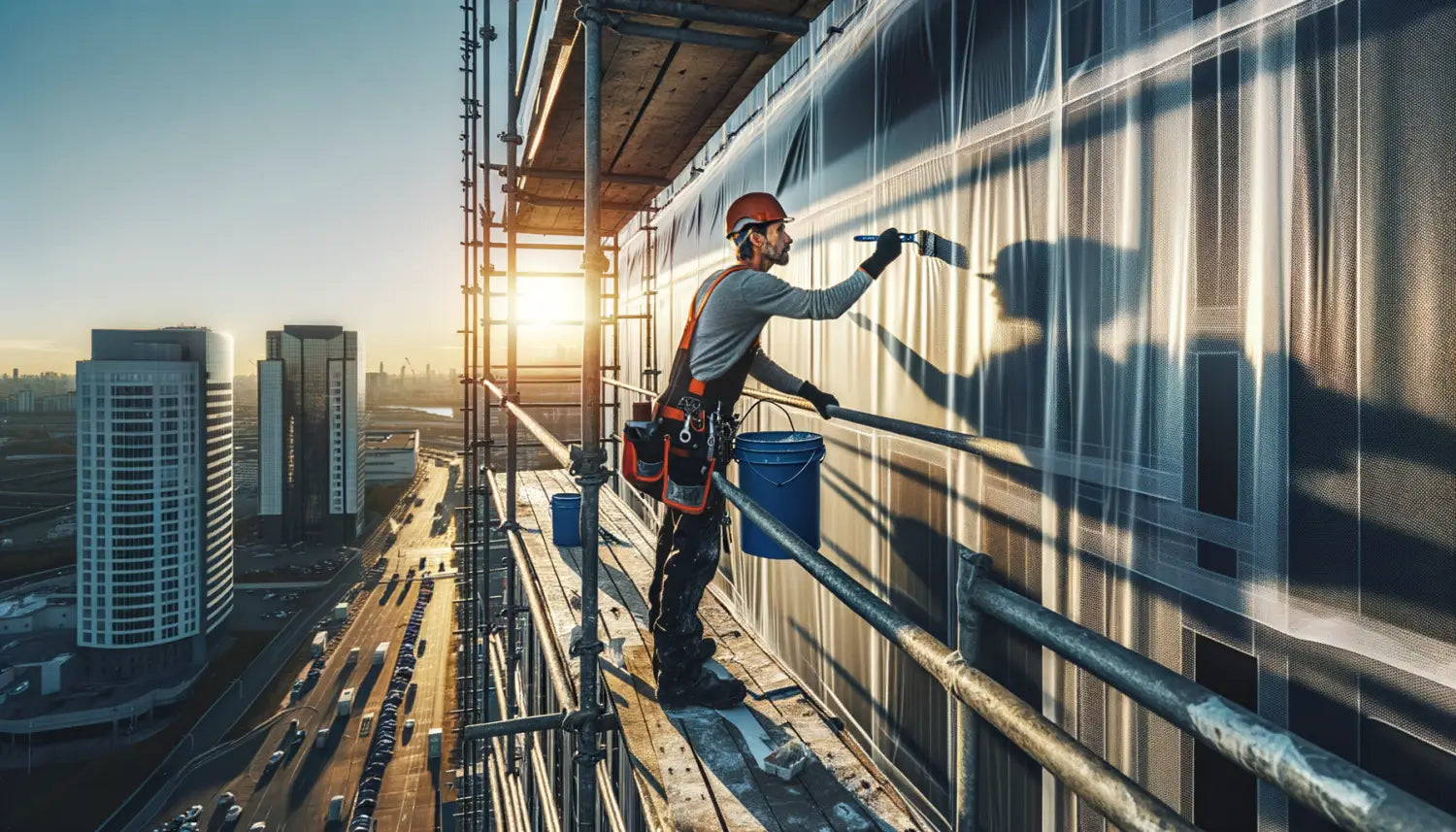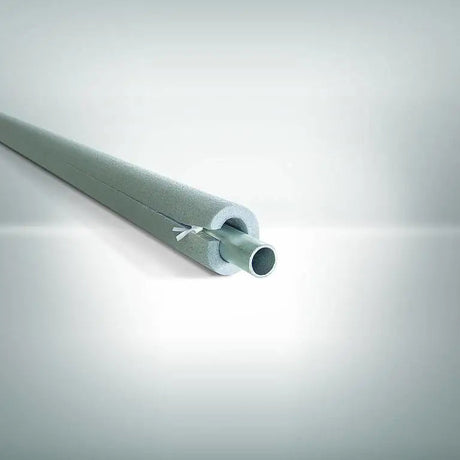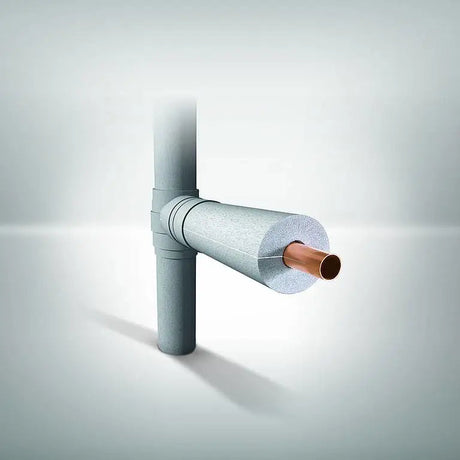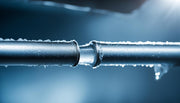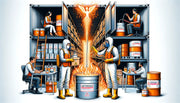Have you ever wondered why some buildings stay snug and dry, irrespective of the relentless downpours outside? The secret lies in a process called waterproofing—a silent guardian that not only keeps the elements at bay but also plays a pivotal role in the energy efficiency of a building. But how exactly does this unsung hero contribute to a greener, more sustainable environment?
What is waterproofing?
In essence, waterproofing is the application of a resistant barrier over surfaces of a construction to prevent water ingress. Think of it as a raincoat for your building, shielding it from water damage and the myriad of problems that follow suit.
The importance of waterproofing in construction
Imagine a house without waterproofing—it wouldn't take long for the relentless rain to penetrate the walls and cause havoc. Dampness, mould, and structural damage would follow, leading to costly repairs and headaches for homeowners. In construction, it's an indispensable step that ensures the integrity and longevity of edifices.
How waterproofing contributes to energy efficiency
But here's the twist: waterproofing isn't just about keeping you dry. It's also about keeping your energy bills low. How? By sealing up the nooks and crannies, it keeps the cold out and the warmth in, reducing the need for heating and contributing to a more energy-efficient building. It's a win-win!
Understanding Energy Efficiency in Buildings
Energy efficiency—it's a term that's bandied about quite a bit, but what does it truly entail? At its core, it's about reducing the amount of energy required to provide products and services. In the context of buildings, it means using less energy to heat, cool, and power up spaces.
Why energy efficiency matters
With the planet heating up and natural resources dwindling, cutting down on energy consumption is more crucial than ever. Every kilojoule saved is a step towards a more sustainable future.
The impact of energy-efficient buildings on the environment
Buildings that are energy efficient are like gentle giants—they tread lightly on the earth. They cut down on greenhouse gas emissions, conserve water, and reduce waste. The result? A happier, healthier planet for all.
The role of waterproofing in enhancing energy efficiency
Here's where waterproofing shines. It's not just a barrier against water; it's a barrier against energy loss. By preventing damp and cold spots, it assists the insulation in doing its job effectively, ensuring that heating and cooling systems don't have to work overtime.
Common Waterproofing Techniques
Waterproofing is an art and a science, with a variety of techniques at the ready. Each with its own set of strengths and weaknesses, these methods are the toolbox of the trade.
Overview of common waterproofing methods
From liquid membranes that spread like butter on toast to sturdy sheet membranes that roll out like carpets, waterproofing methods come in all shapes and sizes. There's also the bentonite clay method that swells up to seal tight, and cementitious waterproofing that's as tough as nails.
Advantages and disadvantages of each technique
Liquid membranes are a doddle to apply, but they require a keen eye for detail to avoid misses. Sheet membranes offer robust protection but can be a bit of a fiddle to install. Bentonite is nature's sealant, but not the best pick in constantly wet conditions. Cementitious waterproofing is the heavy-duty option, though it might lack the flexibility of others.
Considerations for choosing the right waterproofing method for energy efficiency
The right pick isn't just about keeping water out; it's also about energy in. Factors like compatibility with insulation, the thermal properties of the materials, and the building's specific needs all come into play. It's a balancing act between waterproof prowess and energy conservation.
Waterproofing Materials and Their Impact on Energy Efficiency
Materials matter. In waterproofing, the choice of substance can make or break the energy efficiency game.
Types of waterproofing materials
From the trusty bituminous coatings, which have been around the block a few times, to the eco-friendly polyurethane liquids that are making waves, the range of materials is vast. There are also acrylic-based solutions that offer a bit of stretch and silicone coatings that shrug off UV rays like it's nothing.
How different materials affect energy efficiency
Some materials are better buddies with insulation than others. For instance, reflective coatings can bounce back the sun's heat, keeping buildings cooler. On the flip side, dark coatings may absorb too much heat, which isn't ideal if you're trying to keep cool in the summer.
Sustainable and energy-efficient waterproofing materials
Eco-warriors, rejoice! There are materials out there that tick both the sustainable and energy-efficient boxes. These are the champions that not only ward off water but also come with a lower carbon footprint. They're the materials of the future, paving the way for greener buildings.
Energy-Efficient Waterproofing Solutions
Innovation is the name of the game when it comes to energy-efficient waterproofing. The industry is constantly evolving, with new products and methods that push the boundaries of what's possible.
Innovations in energy-efficient waterproofing
We're talking about high-tech membranes that can heal themselves and coatings that reflect infrared radiation. There's a whole world of cutting-edge solutions that are transforming buildings into bastions of energy efficiency.
Case studies of successful energy-efficient waterproofing projects
Real-world examples abound, showcasing the remarkable impact of these solutions. From skyscrapers that stay cool amidst the city heat to homes that snugly retain warmth, the proof is in the pudding.
The economic and environmental benefits of energy-efficient solutions
Let's talk brass tacks—investing in energy-efficient waterproofing pays off. It slashes energy bills, extends the life of buildings, and reduces the environmental footprint. It's a smart choice for the wallet and the world.
Benefits of Energy-Efficient Waterproofing
The perks of energy-efficient waterproofing stretch far and wide, touching on everything from the micro to the macro.
Reduced energy consumption
First up, it's a powerhouse when it comes to cutting energy use. With a well-sealed building envelope, the need for heating and cooling plummets, and so do the energy bills.
Improved indoor air quality
But wait, there's more! Waterproofing also blocks out moisture that can lead to mould and mildew, which means better air quality indoors. It's a breath of fresh air—literally.
Extended lifespan of buildings
Buildings with top-notch waterproofing stand the test of time. They resist the wear and tear of the elements, staying spry for years to come. It's like giving your building a dose of the fountain of youth.
Regulatory Standards for Energy-Efficient Waterproofing
When it comes to constructing or retrofitting buildings with energy-efficient waterproofing, there's a rulebook to follow. These regulations ensure that buildings not only stand strong against the elements but also meet the energy-saving criteria that are the need of the hour.
Building codes and standards related to energy-efficient waterproofing
Across the UK, building codes like the Building Regulations Part L lay down the law on energy efficiency. These codes dictate the thermal performance of buildings and, by extension, the waterproofing materials and methods used.
Compliance requirements for energy-efficient waterproofing
To hit the mark, builders and developers must toe the line with these regulations, selecting waterproofing solutions that tick all the right boxes in terms of energy efficiency. It's not just about passing muster at the time of construction; these buildings need to keep up their energy-saving game year after year.
The role of regulatory standards in promoting energy efficiency through waterproofing
Regulations are the guiding stars that lead the construction industry towards a greener future. They drive innovation and ensure that energy efficiency isn't just a nice-to-have, but a must-have in every building's design.
Integration of Waterproofing and Energy Efficiency in Building Design
The magic happens when waterproofing and energy efficiency are baked into the building design right from the start. It's about creating a blueprint for a structure that's not only watertight but also airtight in terms of energy conservation.
Best practices for integrating waterproofing and energy efficiency in building design
The best practices are clear: think ahead, plan with precision, and choose materials that serve a dual purpose. Insulation and waterproofing should work hand in glove, complementing each other to create a building that's as snug as a bug in a rug.
Collaboration between architects, engineers, and waterproofing specialists
No man is an island, and no building is the work of a single hand. It takes the collective genius of architects, engineers, and waterproofing maestros to concoct a structure that's both moisture-resistant and miserly on energy.
Key considerations for maximizing energy efficiency through waterproofing design
The devil is in the details: thermal bridges, air tightness, and moisture control are all part of the puzzle. It's about crafting a design that's so tight-knit, not a single joule of energy slips through the cracks.
Maintenance and Longevity of Energy-Efficient Waterproofing Systems
Even the best waterproofing system can't run on autopilot forever. To keep the energy efficiency up to scratch, maintenance is key.
Importance of regular maintenance for energy-efficient waterproofing systems
Like a car needs its oil changed, a waterproofing system needs regular check-ups. It's about nipping potential problems in the bud and keeping the system running like a well-oiled machine.
Tips for preserving the energy efficiency of waterproofing over time
Keep an eye out for signs of wear and tear, clear those drains and gutters, and make sure the insulation remains dry and intact. It's about being proactive rather than reactive.
Cost-effective strategies for maintaining energy-efficient waterproofing systems
Prevention is cheaper than cure—that's the mantra. Regular inspections and timely repairs can save a packet in the long run, avoiding the hefty costs of an energy efficiency nosedive.
Energy-Efficient Waterproofing for Different Building Types
From cosy cottages to towering office blocks, every building has its own waterproofing and energy efficiency needs.
Energy-efficient waterproofing solutions for residential buildings
Houses are havens and keeping them energy-efficient is paramount. Opting for waterproofing solutions that complement the insulation can make homes more comfortable and less costly to heat.
Applications of energy-efficient waterproofing in commercial and industrial structures
In the world of business, time is money, and so is energy. Commercial and industrial buildings benefit from waterproofing that cuts down on heating and cooling costs, making them more sustainable and cost-effective.
Special considerations for energy-efficient waterproofing in specific building types
Each building is unique, with its own quirks and requirements. Whether it's a hospital that needs to be squeaky clean or a data centre that can't afford to overheat, tailor-made waterproofing solutions are the order of the day.
Environmental Impact of Energy-Efficient Waterproofing
Energy-efficient waterproofing isn't just good for the pocket; it's a boon for the planet too.
Reduction in carbon emissions
By paring down the energy use, these waterproofing systems help in slashing carbon emissions. It's a step towards curbing the global warming monster and keeping our skies clear.
Preservation of natural resources
Every kilowatt saved means less demand on our natural resources. It's about making the most of what we have and leaving a lighter footprint on the earth.
Contribution to sustainable and resilient communities
Sustainable waterproofing is the cornerstone of communities that stand the test of time. It makes for buildings that are not just shelters but sustainable sanctuaries that weather the storms of change.
The Future of Energy-Efficient Waterproofing
The future is bright for energy-efficient waterproofing, with innovation at the helm steering us towards a more sustainable horizon.
Emerging technologies and trends in energy-efficient waterproofing
From smart membranes that adapt to the weather to nanotechnology that takes waterproofing to the molecular level, the sky's the limit.
Potential advancements in sustainable and energy-efficient waterproofing materials
Imagine waterproofing materials that are not only energy-efficient but also made from renewable resources. The potential is huge for materials that close the loop and contribute to a circular economy.
The role of energy-efficient waterproofing in future construction practices
In the construction practices of tomorrow, energy-efficient waterproofing will be standard, not an afterthought. It will be an integral part of the DNA of every building, supporting a future that's both sustainable and secure.
Conclusion
In the grand scheme of things, energy-efficient waterproofing may seem like a small cog in the wheel. But make no mistake—it's a cog that keeps the whole machine humming along nicely. From reducing energy consumption to bolstering the lifespan of buildings, it's a key player in the pursuit of greener, more sustainable construction practices.
So, what's the call to action? It's simple: let's embrace sustainable and energy-efficient building practices with open arms. With the right materials, methods, and mindset, we can build a future where every building is not just a shelter, but a beacon of efficiency and sustainability.
The future of energy-efficient waterproofing in construction is not just bright; it's dazzling. It's a future where buildings stand strong against the elements, snug in their energy-efficient armour, ready to face whatever the weather—and the world—throws their way.

